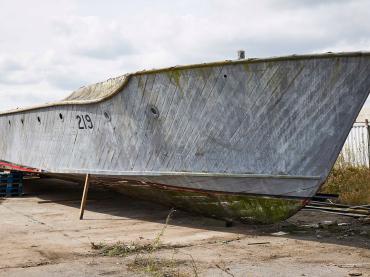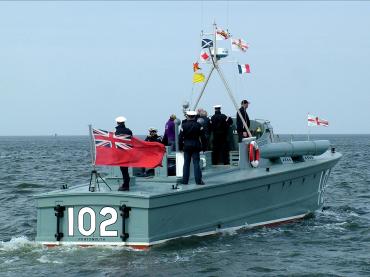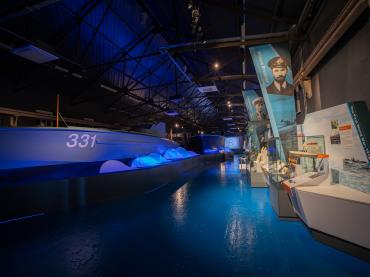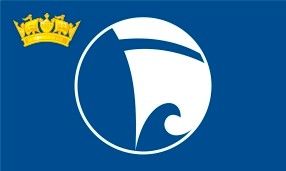
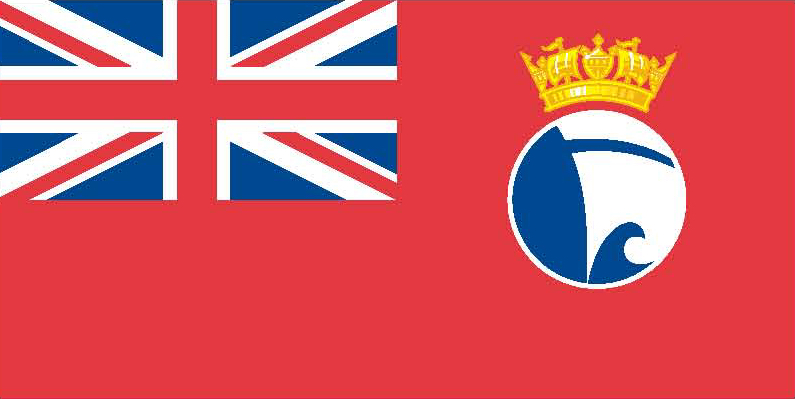
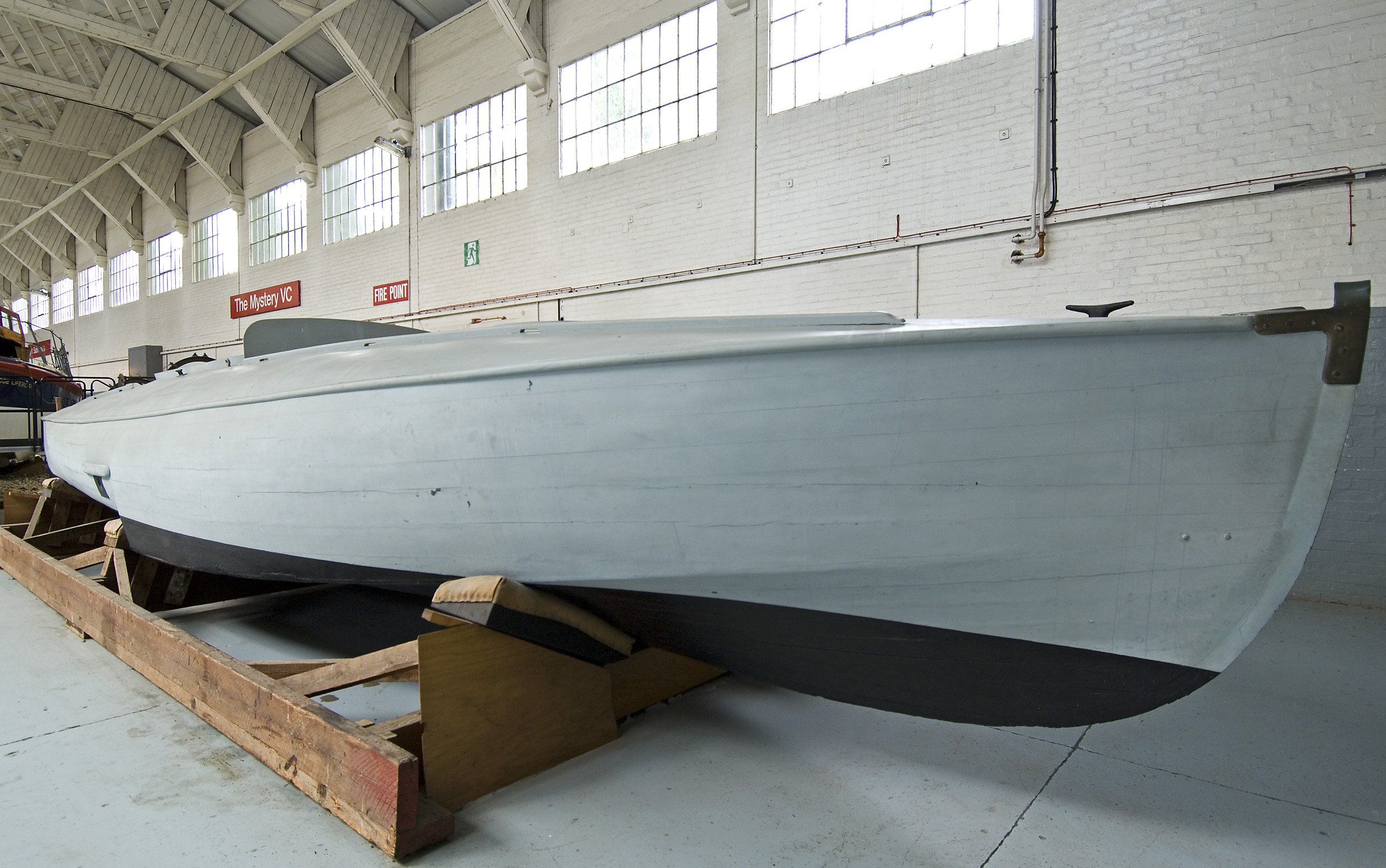
Details
Construction
Dimensions
History
The idea for a manoeuvrable high-speed torpedo boat was conceived in 1915 by three Royal Navy lieutenants from the Harwich Destroyer Force called Hampden, Bremner and Anson. What was needed was a boat capable of surprise attack on the enemy and able to make a quick get-away.
With the approval of the Admiralty’s First Sea Lord, Sir Henry Jackson, for the idea, 12 of these Coastal Motor Boats (CMBs) were ordered in January 1916. Under great secrecy, all 12 boats were completed by August that year. They were small – around 15 tons – and were all designed and built by J. Thornycroft at Hampton who had experience of constructing small, fast boats.
Due to the vessels’ specialisation, CMB crews had to be trained from scratch and members were known as the ‘suicide club’ because of the perilous nature of their work. Each vessel had a crew of three, was armed with a single 18-inch torpedo and four Lewis machine guns, and was capable of a top speed of around 30 knots.
CMB 4’s first assignment was to Dunkirk in December 1916 under the command of W.N.T. Beckett, as part of the Dover patrol CMB 3rd Division. She carried out numerous patrols along the Belgian coast. Then, on 7th April 1917, CMB 4, together with CMBs 5, 6 and 9, took part in an attack on a German destroyers at Zeebrugge. A sworn affidavit from Beckett notes “... in the course of the action one of the said German torpedo boat destroyers was torpedoed and sunk whilst the other was badly damaged.” For these actions Beckett was Mentioned in Despatches (MiD) and received the Distinguished Service Cross (DSC) for his actions. CMB 4 also received the battle honour ‘Zeebrugge 1918’.
After the war, CMB 4 was sent to Russia in 1919 to assist the Czarist ‘White’ Russian cause, running couriers in and out of Petrograd by sea. Lt Augustus Agar was place in charge of CMBs 4 & 7, shipping them under the greatest secrecy under the guise of private yachts with the crew in civilian clothing. Once at their base at Terriokin in neutral Finland, CMB 4’s shallow draft and high speed enabled it to pass over the defensive minefields at Petrograd and Krondstat.
When the couriering duties ceased, Agar was persuade to launch an attack on ships controlled by the Bolsheviks. On 17th June 1919 CMB 4 attacked and sank the Red Fleet’s armoured cruiser OLEG at Krondstat, then escaped under a barrage of fire. CMB 4 re-joined the British fleet and received a hero’s welcome. Agar commented: “They cheered us all the way up. What a welcome…just our teeny party of six in two boats and the whole British Fleet, thousands of sailors cheering like mad. I nearly cried.” For this brave action the crew members of CMB 4 received due recognition; Agar received the Victoria Cross (referred to as the ‘Mystery VC’ because of the secrecy of the operation) at the CMB’s base at Osea Essex. S/Lt Hampsheir [sic] was awarded the DSC and Chief Motor Mechanic Beeley the CGM. Meanwhile the Russians, their pride dented, put a bounty of £5,000 on Agar’s head.
Significance
1. What is the vessel’s ability to demonstrate history in her physical fabric?
Evidence for designs, functions, techniques, processes, styles, customs and habits or uses and associations in relation to events and people. How early, intact or rare these features are may impact on significance.
CMB 4 (Coastal Motor Boat 4) was designed as a torpedo boat that could manoeuvre at high speeds in shallow waters. She was powered by a single Green V/12 cylinder petrol engine of 250bhp, capable of reaching the top speed of 35 knots. She carried a Lewis machine gun and a single 18inch torpedo in a trough aft of the cockpit ready to be launched tail first over the stern. Her unique design allowed the vessel to steer clear of the torpedo’s tracks if both the boat and vessel were travelling at the same speed. Her wooden hull, which is 8.5ft wide and 40ft in length (44ft including torpedo rails), is original and of sound condition. However, most of her internal fittings are believed to have been lost. She underwent conservation work at the International Boatbuilding Training College (IBTC) at Lowestoft in 1983, but some further maintenance still needs to be carried out.
2. What are the vessel’s associational links for which there is no physical evidence?
Associations with people or places. Off-ship research.
CMB 4 was the successor to earlier steam torpedo boats of the late 1870s and early 1880s, following on from initial experiments by J.I. Thornycroft Ltd in the early 1900s. She is significant being one of the twelve first CMBs, which were ordered in January 1916 under great secrecy. Because of the risk of the enemy finding out about their existence and jeopardising future operations, trials were carried out at night. Due to their specialist nature crews had to be trained from scratch; they earned the name the ‘suicide’ club reflecting the perilous nature of their work.
CMB 4 is associated with a number of important actions during the First World War. She was despatched to Dunkirk as part of the Dover Patrol under the command of W.N.T Beckett, and took part in torpedoing a German torpedo boat destroyer on 7 April 1917. She also assisted in the Ostend raid of 23 April 1918. CMB 4 was sent to Russia in 1919 to assist the Czarist ‘White’ Russian cause, running couriers in and out of Petrograd by sea and was decorated appropriately, with her commander Lt Augustus Agar being awarded the VC, S/Lt Hampsheir receiving the DSC, and Chief Motor Mechanic Beeley being given the CGM.
After the First World War, CMB 4 was exhibited at the Motor Boat Exhibition at Olympia and subsequently at the Crystal Palace. She has been recorded on the National Register of Historic Vessels since 1996 and is a member of the National Historic Fleet.
3. How does the vessel’s shape or form combine and contribute to her function?
Overall aesthetic impact of the vessel, her lines, material she was built from and her setting. Does she remain in her working environment?
CMB 4 is of national significance as a rare survivor of an important wartime innovation. Her hydroplane design with its skimming dish hull and sleek lines was intended to pass across the surface of the water at high speeds, whilst still having good sea-going qualities. This enabled her to be used as an attack vessel capable of making a fast get away. CMB 4 is no longer operational and has been preserved as a static exhibit at the Imperial War Museum at Duxford.
Source: NHS-UK team, 10 November 2015.
This statement was developed as part of the Heritage Lottery funded First World War project. http://www.ww1britainssurvivingvessels.org.uk/
Key dates
- 1916 Built as a torpedo boat in Hampton
- 1916 Proceeded to Dunkirk and attacked German destroyers in Zeebrugge, one of which was destroyed and one seriously damaged
- 1919 Sank Russian Bolshevik cruiser, OLEG, at Kronstadt where Lt Augustus Agar won the VC
- 1919 Put on display at the Imperial War Museum, then at the Vosper Works on Platts Island near Kingston
- Remained at Kingston for many years until the Vosper Works closed
- 1996 Became part of the National Historic Fleet
- 2011 Preserved as a museum exhibit at the Imperial War Museum outstation in Duxford
Sources
Earle, Jim, Defence Lines Osea Island & their Intervention, Defence of Britain Project, pp5-8, 10 May, Edition 10, 1998
Brouwer, Norman J, International Register of Historic Ships, Anthony Nelson, pp144, Edition 2, 1993
Sullivan, Dick, Old Ships, Boats and Maritime Museums, Coracle Books, 1978
World Ship Society British Armed Forces Small Craft Historical Society, Survivors Register, 1998
Willis, Peter, Classic Boat: Secret Drone Boat, pp48-50, March 2015
Own this vessel?
If you are the owner of this vessel and would like to provide more details or updated information, please contact info@nationalhistoricships.org.uk




